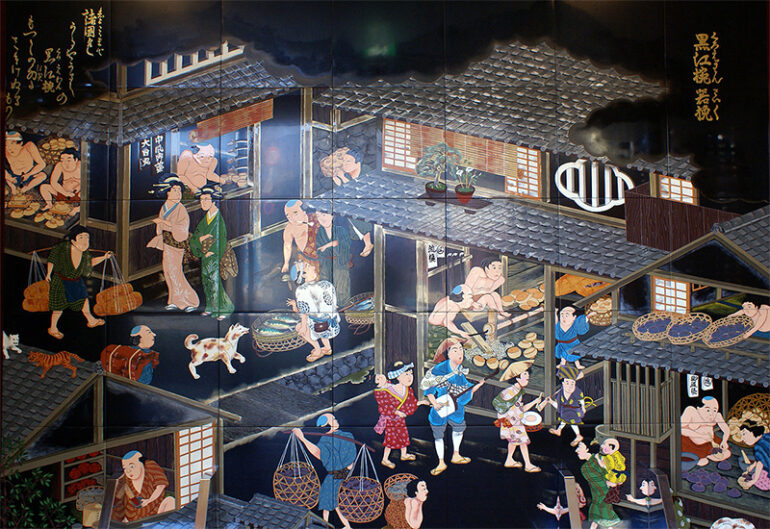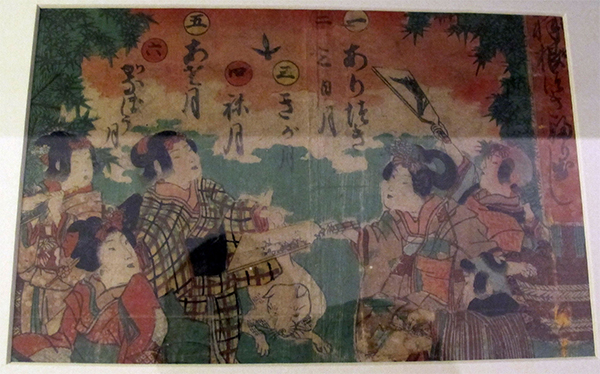In the eighth century, the Chinese woodblock printing process reached in Japan. Japanese woodblock prints, or ukiyo-e, were popular throughout the Edo period in the 17th century. As printing technology advanced, these prints of everyday life, landscapes, kabuki actors, and other subjects became more popular. With its dazzling colors and exact details, Japanese woodblock prints influenced Western painters such as Vincent van Gogh and Claude Monet while also making art affordable. Modern artists are inspired by its history, demonstrating the beauty and craftsmanship of this singular art form.
The Origins of Japanese Woodblock Prints
In the eighth century, the Chinese woodblock printing process reached in Japan. Japanese woodblock prints did not emerge until the Edo period in the 17th century. Landscapes, kabuki performers, gorgeous ladies, and historical events were shown in these “pictures of the floating world,” or ukiyo-e. Ukiyo-e prints became popular as printing technology enabled widespread production and distribution. While giving affordable art to the public, these prints altered Japanese culture and impacted Western painters such as Vincent van Gogh and Claude Monet.
Techniques and Materials Used in Woodblock Printing
Woodblock printing involves a meticulous process that requires skilled artisans and specific materials. The first step is the creation of a design, typically drawn by a master artist. This design is then transferred onto a wooden block, usually made of cherry or pear wood, which is meticulously carved by a skilled craftsman. The carved block is then inked, and a sheet of handmade washi paper is carefully placed on top. The paper is then pressed onto the block using a bamboo baren, ensuring that the ink transfers onto the paper evenly. This labor-intensive technique allows for vibrant colors and intricate details, resulting in the distinctive charm of Japanese woodblock prints.
Themes and Subjects in Japanese Woodblock Prints
Japanese woodblock prints encompass a wide range of themes and subjects, capturing the essence of Japanese culture and society. One prevalent theme is landscapes, depicting serene scenes of nature, including mountains, rivers, and cherry blossoms. Another popular subject is kabuki theater, showcasing vibrant portrayals of actors in dramatic poses and elaborate costumes. Beautiful women, known as bijin-ga, are also a common subject, representing the idealized beauty of the time. Historical events, folklore, and mythology are frequently depicted as well, allowing viewers to delve into Japan’s rich history and legends. These diverse themes and subjects in Japanese woodblock prints offer a captivating glimpse into the artistic and cultural heritage of Japan.
Influences and Legacy of Japanese Woodblock Prints
Woodblock prints from Japan have impacted and inspired artists all over the world. Japanese prints fascinated European painters such as Vincent van Gogh and Claude Monet in the late nineteenth century. These painters were drawn to Japanese prints because of their bold compositions, beautiful colors, and unique perspectives. Japanese woodblock prints impacted Art Nouveau’s flattened perspectives and decorative embellishments. The delicate beauty and fine craftsmanship of ukiyo-e prints continue to inspire contemporary artists, ensuring their durability.
Japanese society and the art world have been shaped by Ukiyo-e woodblock prints. With their vibrant colors, intricate details, and diverse subjects, these prints depicted Japan’s daily life, historical events, and natural beauty. Their influence expanded beyond their immediate surroundings, inspiring Vincent van Gogh and Claude Monet and influencing Art Nouveau. The delicate beauty and fine craftsmanship of ukiyo-e prints inspire modern artists, ensuring their survival.
Photo Attribution:
1st & featured image by https://commons.wikimedia.org/wiki/Category:Ukiyo-e#/media/File:Kainan_kuroe01s3200.jpg
2nd image by https://commons.wikimedia.org/wiki/Category:Ukiyo-e#/media/File:Periodo_edo,_xilografia_ukiyo_e.JPG

